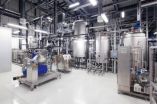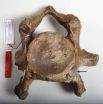(Press-News.org) Beverly, MA, March 24, 2014 – Reports of the two earliest tissue-engineered whole organ transplants using a windpipe, or trachea, created using the patient's own stem cells, were hailed as a breakthrough for regenerative medicine and widely publicized in the press. However, two leading transplant surgeons in Belgium warn of the dangers of media attention, and urge that tracheal bioengineering be demonstrated as both effective and safe before further transplants take place. Their views are published in an Editorial in The Journal of Thoracic and Cardiovascular Surgery, an official publication of the American Association for Thoracic Surgery.
In 2008, surgeons repopulated a donor trachea with cells from a 30-year-old woman, which they then transplanted into the patient. In 2011, a 36-year-old man who had been suffering from late-stage tracheal cancer was given a new trachea made from a synthetic scaffold seeded with his own stem cells. Both procedures were carried out by Professor Paolo Macchiarini and colleagues (Barcelona, 2008, and Sweden, 2011).
In 2012, an article in The New York Times, ''A First: Organs Tailor-Made With Body's Own Cells,'' recognized tracheal regeneration as the first regenerative medicine procedure designed to implant "bioartificial'' organs. The achievement was touted as the beginning of complex organ engineering for the heart, liver, and kidneys, and it was suggested that allotransplantation along with immunosuppression might become problems of the past.
"Major medical breakthroughs deserve the necessary press attention to inform the medical community and public of the news," say Pierre R. Delaere, MD, PhD, and Dirk Van Raemdonck, MD, PhD, from the Department of Otolaryngology Head & Neck Surgery and the Department of Thoracic Surgery, University Hospital Leuven, Belgium. "Unfortunately, misrepresentation of medical information can occur and is particularly problematic when members of the professional and public press are misled to believe unrealistic medical breakthroughs."
The authors raise doubts regarding whether a synthetic tube can transform into a viable airway tube, pointing out that the mechanism behind the transformation from nonviable construct to viable airway cannot be explained with our current knowledge of tissue healing, tissue transplantation, and tissue regeneration. "Cells have never been observed to adhere, grow, and regenerate into complex tissues when applied to an avascular or synthetic scaffold and, moreover, this advanced form of tissue regeneration has never been observed in laboratory-based research," say the authors.
Delaere and Van Raemdonck reviewed the information gathered from published reports on three patients who received bioengineered tracheas and unpublished reports on an additional 11 patients. Although there were differences between the techniques used, production of the bioengineered trachea in all cases produced similar results, and the different approaches worked in comparable ways.
"The results show that mortality and morbidity were very high. Several patients died within a three-month period, and the patients who survived longer functioned with an airway stent that preserved the airway lumen," they observe.
They also question whether the trachea can really be considered to be the first bioengineered organ. From the 14 reports reviewed, they concluded that the bioengineered tracheal replacements were in fact airway replacements that functioned only as scaffolds, behaving in a similar way to synthetic tracheal prostheses.
Publication of these papers in highly ranked medical journals is attributable to the media hype regarding ''stem cells'' and the work done on an airway that is less accessible for direct visualization, say Delaere and Van Raemdonck.
"In conclusion, the ethical justification of tracheal replacement with a synthetic prosthesis or with a decellularized allograft in humans is questionable, because there are no available experimental data describing a possible successful outcome," Delaere and Van Raemdonck remark. "The currently available published articles on bioengineered tracheas and the resulting media attention endanger the field of tracheal replacement and the field of tissue engineering as a whole. For patient safety, tracheal bioengineering must be demonstrated as being efficacious and safe before further transplants," they conclude.
INFORMATION: END
Leading surgeons warn against media hype about tracheal regeneration
Tracheal bioengineering should be shown to be effective and safe before further transplants, reports The Journal of Thoracic and Cardiovascular Surgery
2014-03-25
ELSE PRESS RELEASES FROM THIS DATE:
Research study takes deeper look at the role of gut microbes in the immune system
2014-03-25
LOS ANGELES (March 24, 2014) – New research suggests that gut microorganisms do not merely influence immune cell function, but also support the production of immune cells that form the first line of defense against infection. By understanding the mechanisms responsible for maintaining and replacing immune cells, researchers hope to one day develop targeted therapies to support and boost immune function in humans.
Study investigators from the Regenerative Medicine Institute at Cedars-Sinai collaborated with the Mount Sinai School of Medicine and lead institution — the ...
Replacing insulin through stem cell-derived pancreatic cells under the skin
2014-03-25
LA JOLLA, Calif., March 25, 2014 – Sanford-Burnham Medical Research Institute (Sanford-Burnham) and UC San Diego School of Medicine scientists have shown that by encapsulating immature pancreatic cells derived from human embryonic stem cells (hESC), and implanting them under the skin in animal models of diabetes, sufficient insulin is produced to maintain glucose levels without unwanted potential trade-offs of the technology. The research suggests that encapsulated hESC-derived insulin-producing cells hold great promise as an effective and safe cell-replacement therapy ...
Complex brain functional network connection after stroke
2014-03-25
Studies have shown that functional network connection models can be used to study brain network changes in patients with schizophrenia. A research team from Huazhong University of Science and Technology in China inferred that these models could also be used to explore functional network connectivity changes in stroke patients. The researchers used independent component analysis to find the motor areas of stroke patients, which is a novel way to determine these areas. Functional magnetic resonance imaging datasets were collected from healthy controls and right-handed stroke ...
Technofossils -- an unprecedented legacy left behind by humans
2014-03-25
A new study by an international team of scientists, including Dr Jan Zalasiewicz and Professor Mark Williams of the University of Leicester's Department of Geology, suggests that the fossil impact humans have made on the planet is vast and unprecedented in nature – and that there's been nothing remotely like it since the Earth formed, over four and half billion years ago.
The study, entitled 'The technofossil record of humans' and published by SAGE in The Anthropocene Review, argues that, like dinosaurs, who left their bones and footprints behind for future generations ...
Managing renewables intelligently
2014-03-25
"Wind, solar and biogas are all energy sources with their own strengths and weaknesses. And it's by combining the strengths of each in a smart way that we'll be able to guarantee Germany's energy supply into the future," says Dr. Kurt Rohrig, deputy director of the Fraunhofer Institute for Wind Energy and Energy System Technology IWES in Kassel. But what happens when, instead of a big power plant, you have a host of individual small energy producers feeding in energy to the grid at varying times? Is reliable operation of the grid still technically feasible? In the "Combined ...
Sugar, not oil
2014-03-25
Plastic, gasoline, rubber – very many items we use every day are based on oil. But this raw material is becoming increasingly scarcer. Step by step researchers are therefore investigating possibilities for using renewable raw materials to replace oil. One well-known example of this is biodiesel, which comes not from oil sources, but from fields of yellow-flowering rape. In future it is planned to produce another substance from plants, namely isobutene, a basic chemical used in the chemical industry to produce fuels, solvents, elastomers or even antiknock agents in fuel. ...
Plasma tool for destroying cancer cells
2014-03-25
Plasma medicine is a new and rapidly developing area of medical technology. Specifically, understanding the interaction of so-called atmospheric pressure plasma jets with biological tissues could help to use them in medical practice. Under the supervision of Sylwia Ptasinska from the University of Notre Dame, in Indiana, USA, Xu Han and colleagues conducted a quantitative and qualitative study of the different types of DNA damage induced by atmospheric pressure plasma exposure, the paper is published in EPJ D as part of a special issue on nanoscale insights into Ion Beam ...
Neck ribs in woolly mammoths provide clues about their decline and eventual extinction
2014-03-25
Researchers recently noticed that the remains of woolly mammoths from the North Sea often possess a 'cervical' (neck) rib—in fact, 10 times more frequently than in modern elephants (33.3% versus 3.3%). In modern animals, these cervical ribs are often associated with inbreeding and adverse environmental conditions during pregnancy. If the same factors were behind the anomalies in mammoths, this reproductive stress could have further pushed declining mammoth populations towards ultimate extinction.
Mammals, even the long-necked giraffes and the short-necked dolphins, almost ...
Famous paintings help study the Earth's past atmosphere
2014-03-25
A team of Greek and German researchers has shown that the colours of sunsets painted by famous artists can be used to estimate pollution levels in the Earth's past atmosphere. In particular, the paintings reveal that ash and gas released during major volcanic eruptions scatter the different colours of sunlight, making sunsets appear more red. The results are published today in Atmospheric Chemistry and Physics, an open access journal of the European Geosciences Union (EGU).
When the Tambora volcano in Indonesia erupted in 1815, painters in Europe could see the colours ...
Risk of alcohol-related cancer lowers the intention for binge drinking in college students
2014-03-25
Washington, DC (March 21, 2014) – Binge drinking for college students has proven to be a huge problem at many universities. The risk of DUI or even death makes it a public health concern that students and administrators need to face. A recent study by researchers at the University at Buffalo, State University of New York, found that college students exposed to the risk messages of alcohol-related cancer had lower intent to engage in binge drinking.
Cindy Yixin Chen and Z. Janet Yang of the University at Buffalo, State University of New York will present their study at ...
LAST 30 PRESS RELEASES:
Child survivors of critical illness are missing out on timely follow up care
Risk-based vs annual breast cancer screening / the WISDOM randomized clinical trial
University of Toronto launches Electric Vehicle Innovation Ontario to accelerate advanced EV technologies and build Canada’s innovation advantage
Early relapse predicts poor outcomes in aggressive blood cancer
American College of Lifestyle Medicine applauds two CMS models aligned with lifestyle medicine practice and reimbursement
Clinical trial finds cannabis use not a barrier to quitting nicotine vaping
Supplemental nutrition assistance program policies and food insecurity
Switching immune cells to “night mode” could limit damage after a heart attack, study suggests
URI-based Global RIghts Project report spotlights continued troubling trends in worldwide inhumane treatment
Neutrophils are less aggressive at night, explaining why nighttime heart attacks cause less damage than daytime events
Menopausal hormone therapy may not pose breast cancer risk for women with BRCA mutations
Mobile health tool may improve quality of life for adolescent and young adult breast cancer survivors
Acupuncture may help improve perceived breast cancer-related cognitive difficulties over usual care
Nerve block may reduce opioid use in infants undergoing cleft palate surgery
CRISPR primes goldenberry for fruit bowl fame
Mass General Brigham announces new AI company to accelerate clinical trial screening and patient recruitment
Fat tissue around the heart may contribute to greater heart injury after a heart attack
Jeonbuk National University researcher proposes a proposing a two-stage decision-making framework of lithium governance in Latin America
Chromatin accessibility maps reveal how stem cells drive myelodysplastic progression
Cartilaginous cells regulate growth and blood vessel formation in bones
Plant hormone allows lifelong control of proteins in living animal for first time
Swedish freshwater bacteria give new insights into bacterial evolution
Global measures consistently underestimate food insecurity; one in five who suffer from hunger may go uncounted
Hidden patterns of isolation and segregation found in all American cities
FDA drug trials exclude a widening slice of Americans
Sea reptile’s tooth shows that mosasaurs could live in freshwater
Pure bred: New stem cell medium only has canine components
Largest study of its kind highlights benefits – and risks – of plant-based diets in children
Synergistic effects of single-crystal HfB2 nanorods: Simultaneous enhancement of mechanical properties and ablation resistance
Mysterious X-ray variability of the strongly magnetized neutron star NGC 7793 P13
[Press-News.org] Leading surgeons warn against media hype about tracheal regenerationTracheal bioengineering should be shown to be effective and safe before further transplants, reports The Journal of Thoracic and Cardiovascular Surgery



